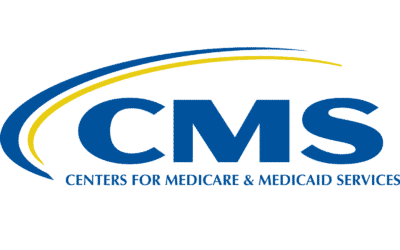The Big Picture of Physician Payment Within CMS
The big picture is still playing out for physician payment (and when I say “physician,” I mean all advanced practitioners). It started in 2007 when CMS created “registries” to facilitate quality reporting. That’s when CMS began to get doctors used to the idea of having bonus money (and later penalties) attached to submitting quality data – initially by using old fashioned claim forms and later through their EHR. In 2009, Congress mandated that all practitioners obtain and use electronic health records. The quiet goal of this mandate was to facilitate the reporting of data to CMS. The quality measures first reportable through EHRs began with easy things like calculating a BMI or recording medications. Gradually measures got more sophisticated and specialty societies began to develop measures relevant to surgery, cardiology, radiology, emergency medicine, etc. Unfortunately, EHRs were (and often continue to be) badly designed so quality data has to be calculated either by the physicians themselves or by entities like registries which must extract the data. Gradually CMS has developed ways to get data transmitted directly from the EHRs themselves. (Trust me when I say that the day is coming when quality data will be routinely transmitted directly from your EHR to CMS.)
In the beginning of quality reporting, physicians could select the quality measures they wanted to report, and this usually meant that they reported the measures with the highest scores. It was (and still is) an incredibly silly program since most people understand that for example, calculating BMI or recording whether patients smokes (and then “counseling” them about their weight and smoking) are not valid measures of whether an orthopedic surgeon offers high quality care when he/she does a hip replacement. There’s almost no data to show that the current quality reporting system actually improves quality care and I don’t know any practicing physicians who think the current system has done anything but increase overhead and frustration. But – remember, there’s a bigger plan and we aren’t all the way there yet.
Right now, the reasons to participate in the QPP and associated quality reporting is mostly to avoid the 9% penalty to Medicare Fee for Service (FFS). The “bonus” payment for being totally awesome at this game of weird electronic chess has not been more than 2%, and it actually costs doctors money to do it. It feels increasingly irrelevant as the percentage of patients insured under Medicare FFS continues to decrease and those with Medicare “Advantage” plans continue to increase. And, it f eels particularly irrelevant to most wound care and hyperbaric medicine doctors working in a hospital-based outpatient department because they are often under the QPP “reporting threshold” and thus do not have to report anything. Doctors in private practice have been paying more attention to the QPP, however. Last year, their measly 2% bonus offset a 3% reduction in physician payment. Since wound care is moving more and more into the private practice setting, more wound care practitioners are paying attention. But I digress…
Why Having Relevant Quality Measures Will Matter (Someday)
And that takes me back to why relevant quality measures are important. The number of standard MIPS quality measures that a wound care doctor can report is down to about 6. That’s the minimum number a practitioner needs to report. (Later I will blog about how to select MIPS measures if you are a wound care practitioner.) Every year there are fewer MIPS measures we can report – because by design CMS has been retiring the generic ones that anyone can report. In a few more years, there won’t be enough “general” quality measures left. However, by then it won’t matter because you will be expected to report the measures assigned to your original specialty. For me, that will include screening my patients for colon and breast cancer. Unfortunately, I won’t be able to report the Family Practice measures because I don’t practice family medicine. What’s worse, I’ve already told you that according to CMS, I suck as an FP — from the cost standpoint. What will happen then? Well, I can only guess at what my punishment will be, but somehow it will involve reducing my payment rate for services. And it won’t be limited to Medicare FFS patients. The private payers are also using quality reporting to decide on reimbursement rates. Many different methods are being set up to ensure that I will feel the pain of my “bad” quality performance as an FP, and my out-of-control costs as an FP.
Whether we will be able to survive as wound care practitioners depends on a lot of factors including whether we are ever recognized as a subspecialty. But it will also depend on having some quality measures that are relevant to what we actually do. Every year I do hand-to-hand combat with CMS to save these measures. There are fewer than there used to be. One year CMS rejected the arterial screening measure for patients with lower extremity ulcers because they said it was “just a process,” so I had to explain why missed arterial disease is a major reason for limb loss. The next year they rejected the venous ulcer compression measure because they said it was “just a process”– so then I had to explain about the importance of venous ulcer compression to healing. This year they rejected the nutritional screening measure – until I showed them that even though only about 2% of wound patients get a nutritional screen, 60% of those screened are malnourished or at risk of malnutrition. The quality measure battle with CMS is a lonely one for me and my team because we are on our own every year, and it costs money. But, every year when I finally get the encrypted email from CMS confirming the measures that survived their attempts to get rid of them, I remind myself that some battles we do not fight for ourselves, but for those who come after.
Check out the 2023 wound care measures here.
Future blogs will discuss the standard MIPS measures that are likely to be able to be reported by wound care practitioners in 2023, as well as other thoughts about where the QPP is headed and the implications for wound management practitioners.
Wound care clinicians using certain SMART apps inside Epic and Cerner can benchmark and report their quality measures without effort or costs. If you want more information about benchmarking and reporting quality measures with SMART apps, click here.
–Caroline
Here’s a link all past blogs that provide information about how we got to this point. The earliest post I’ve included is 2015 (8 years ago), but all the posts confirm that this is a well thought out plan that’s been planned for decades (and we are not at the end of it).
Here are links to all the articles I have written for Today’s Wound Clinic since 2011. CMS always tells us what they intend to do. We respond by saying, “Surely not!” and then they do it!
- The Uphill Path to Value-Based Wound Care with Nutritional Assessment July 2019
- Hyperbaric Medicine Quality Reporting: Building an Ark to Ensure Survival March 2018
- My Quality Measure To-Do List January 2018
- Capturing Quality Wound Care Under MIPS August 2017
- Keeping ‘Skin in The Game’ for the Quality Payment Program June 2017
- Thoughts From the Eye of the Healthcare Storm Part 2: The Wound Care Clinician’s Road Map to MACRA & MIPS March 2017
- Thoughts from the Eye of the Healthcare Storm Part 1: The HOPD’s Role in Reporting Quality Measures March 2017
- Realities of a New Payment System From the Physician & HOPD Perspective March 2017
- The Wound Care Clinician’s Road Map to MACRA & MIPS, March 2017
- Taking ‘Our Own Medicine’ Through the Nutritional Screening Quality Measure & Quality Payment Program January 2017
- Providing an Overview of the New Quality Payment Program November 2016
- Quality Assurance Resource Guide: MACRA & MIPS are Fixable Problems for Wound Care Specialists August 2016
- Quality Measures Resource Guide: How to Transition from Fee-for-Service to Value-Based Payments April 2016
- Reimbursement Crystal Ball: Wound Care Models in Value-Based Payment April 2016
- Self-Reporting of PQRS Measures in 2016: What You Choose to Report Does Matter! April 2016
- Physician Quality Reporting System Checklist for Wound Care Providers: The Art of Documentation and Reporting April 2016
- Understanding Business Profitability with Changing Models of Wound Care Reimbursement April 2016
- Next Generation ACO Model: Conversation With Industry Executives April 2016
- How to Transition From Fee-For-Service to Value-Based Payments April 2016
- The Brave New World of Medicare Physician Payment: The Quality & Resource Use Report and What You Must do before March January 2016
- The Wound Care Clinician’s Quality Reporting Survival Guide March 2015
- Measuring Quality in Wound Care January/February 2013
- Is Your Wound Clinic Prepared to Provide Care Under Parallel Reimbursement? October 2012
- The Changing Face of Wound Care: Measuring Quality October 2012
- Measuring Quality In Wound Care November/December 2011




